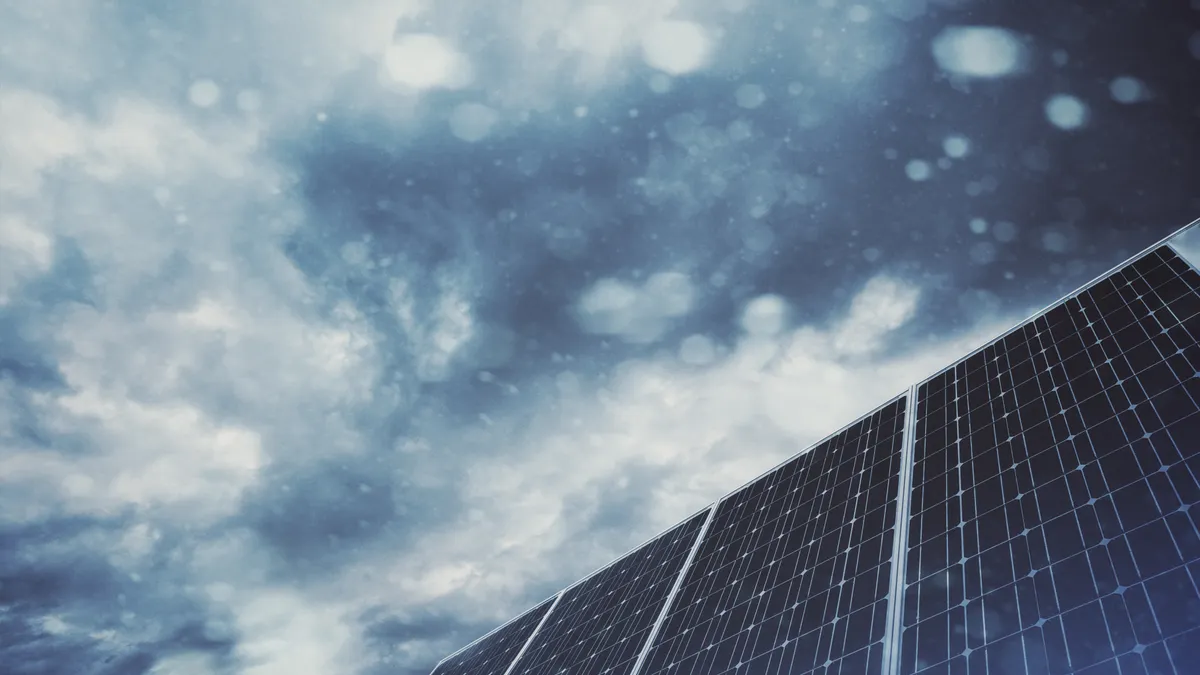Dive Brief:
-
Solar panels that have been subjected to severe weather events produce about 1% less energy per year after these events, according to a new study by the National Renewable Energy Laboratory.
-
Although the immediate impact of a single event is relatively small, the effects could accumulate over time to represent more sizable losses for owners of large fleets of solar panels, according to Dirk Jordan, a distinguished researcher at NREL and an author of the study.
-
Given the increased frequency of severe weather, solar manufacturers — and utilities — may want to consider more stringent standards for solar panel durability to avoid future losses, Jordan said.
Dive Insight:
Solar generation — and especially solar plus storage — is generally a good source of backup power in the aftermath of extreme weather events, Jordan said. But severe weather can have a long-term impact on the productivity of solar systems that increases with each severe weather event, according to new NREL research.
Each episode of severe weather decreases a solar installation's annual productivity by about 1% on average, according to the study, so a solar system that is subjected to multiple severe weather events could take heavy losses over time as a result. Previous research by NREL indicates that productivity of the average solar installation declines by about .75% per year, with solar panels in warm climates experiencing more rapid aging than those in cooler climates.
“It sounds small, and maybe it is if only one system is impacted,” Jordan said, “but if you are an owner with a fleet of 5,000 systems and many megawatts that are impacted, it could represent a lot of money.”
NREL's analysis also points to a possible need for more stringent testing of solar panels, Jordan said. For example, his team's analysis determined that hail begins to have long-term impacts on solar output when it exceeds about 1 inch in diameter. The current industry standard calls for solar panels to be stress-tested for impact by hail of up to 1 inch. But given the increased frequency of severe hail across the country, Jordan said this standard may not adequately protect against lasting damage.
Jordan said he also had concerns about trends such as using larger modules with thinner front-side glass panels in utility-scale solar installations, as these modules may be more susceptible to weather-related damages.
The study also found that high wind events cause lasting damage to solar panels beginning at about 56 miles per hour, and that heavy snowfall may cause long-term damage beginning at depths of 1 meter, or a little over three feet.
These impacts aren't uniform across all impacted panels, Jordan said. Some panels, for example, might be sheltered from high winds by trees or buildings. Or poor installation or component quality could cause certain panels to be more susceptible to weather-related productivity losses.
The study didn't differentiate between residential and utility-scale solar installations, and wasn't able to explore the specific reasons why severe weather caused long-term productivity losses, said Kirsten Perry, a data scientist on NREL's PV reliability and performance team. She said NREL hopes to parse these issues and expand the dataset to include other kinds of natural disasters, such as heatwaves and wildfires, in future research.














